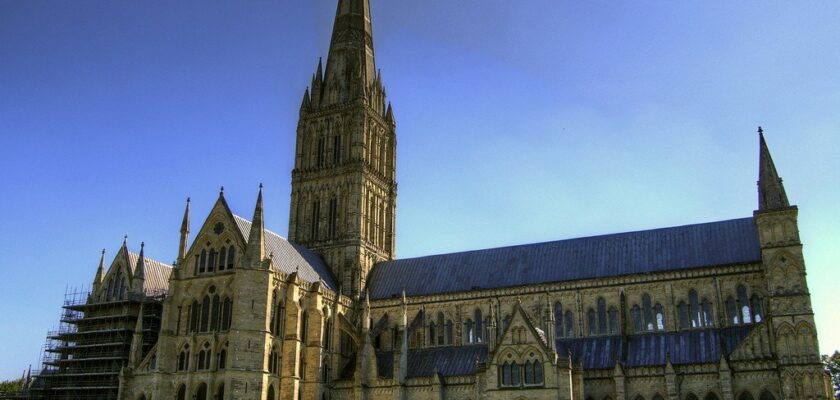Salisbury Cathedral
Salisbury Cathedral is the Gothic cathedral of the Virgin Mary in the city of Salisbury, considered the purest example of English Gothic.
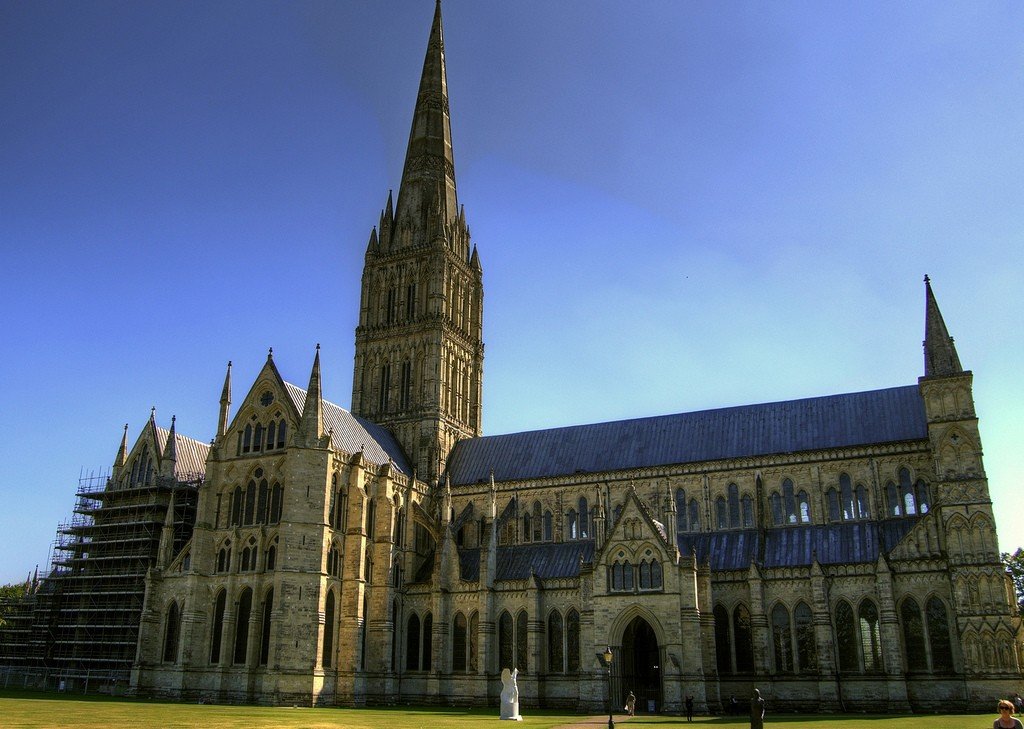
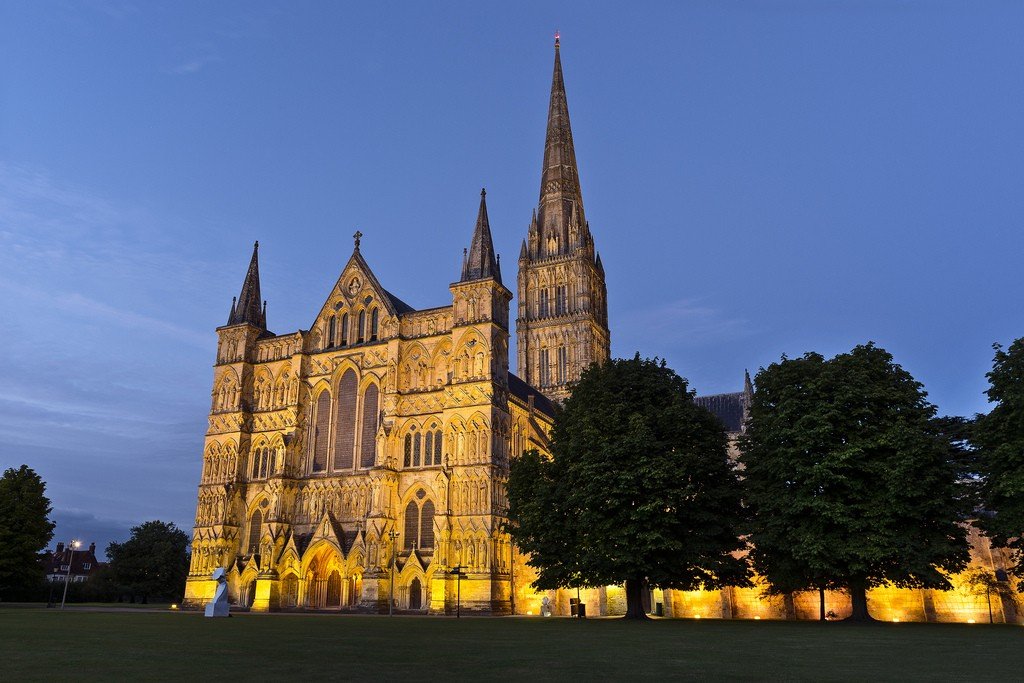
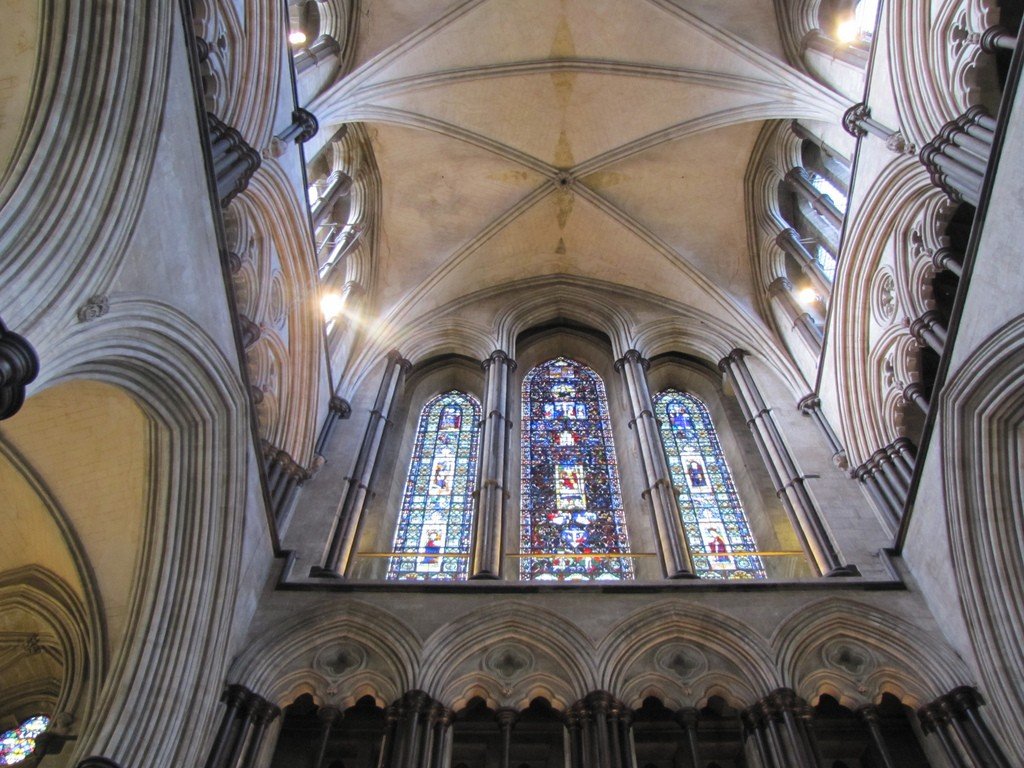
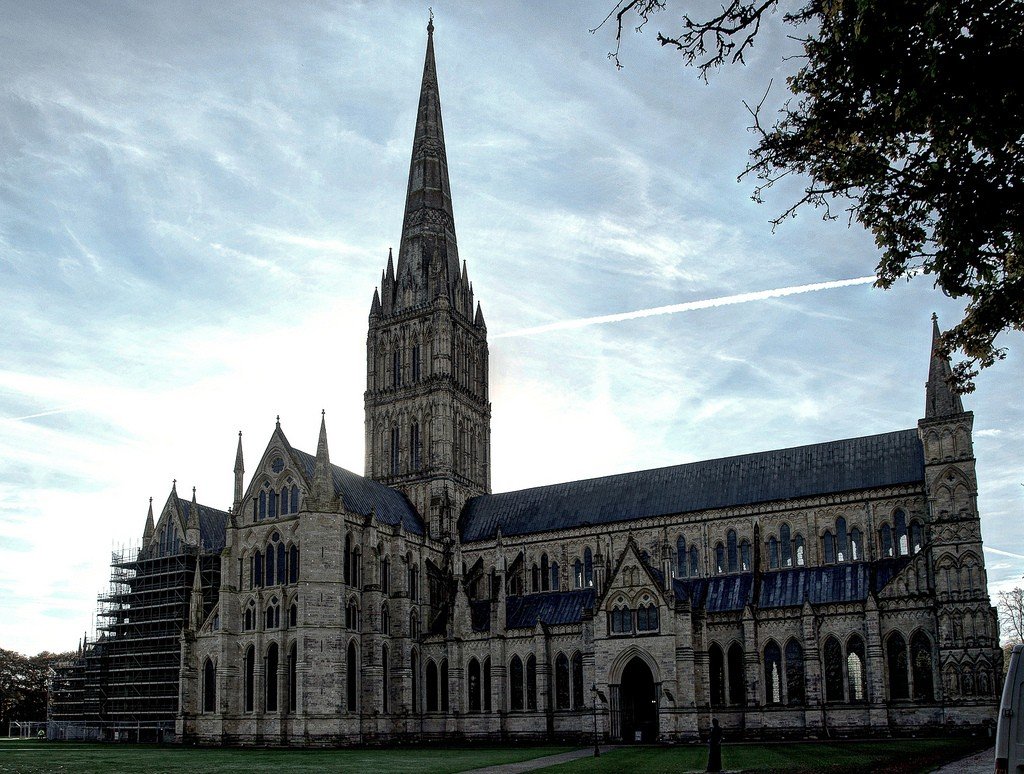
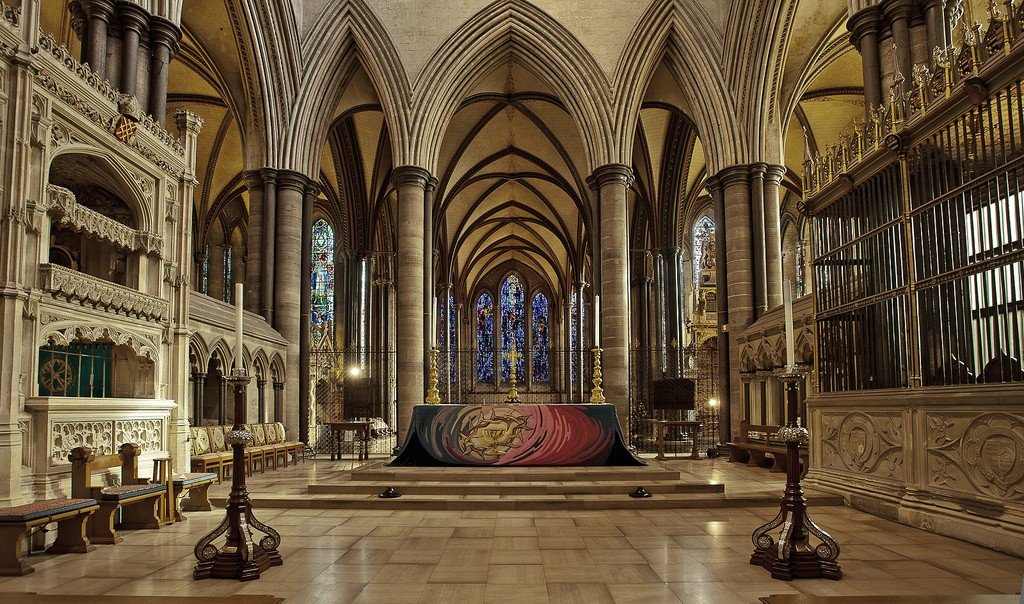
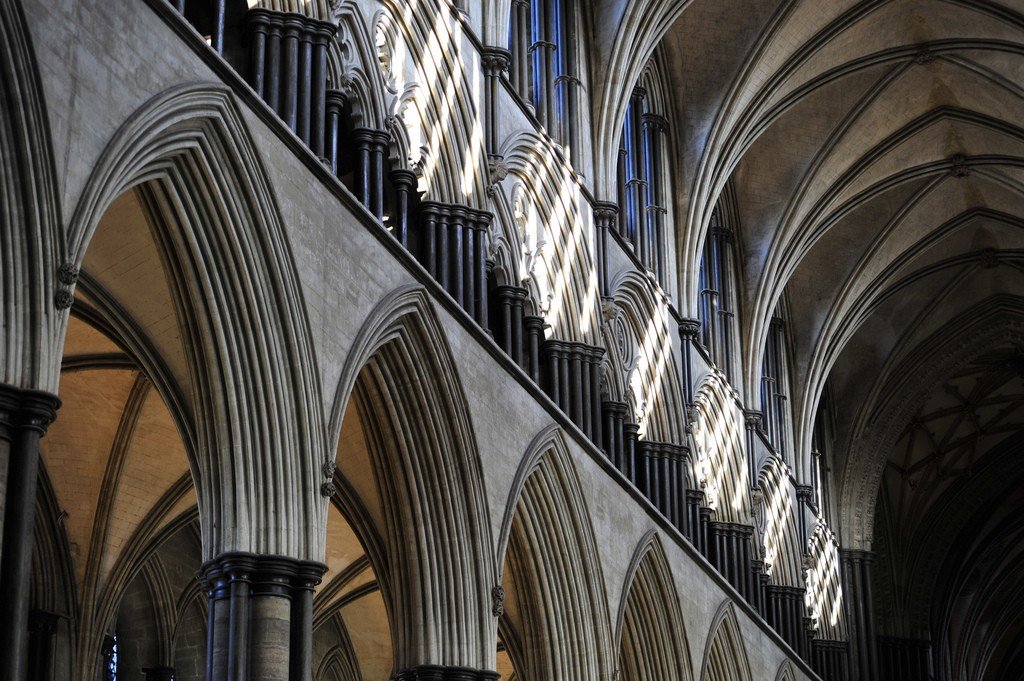
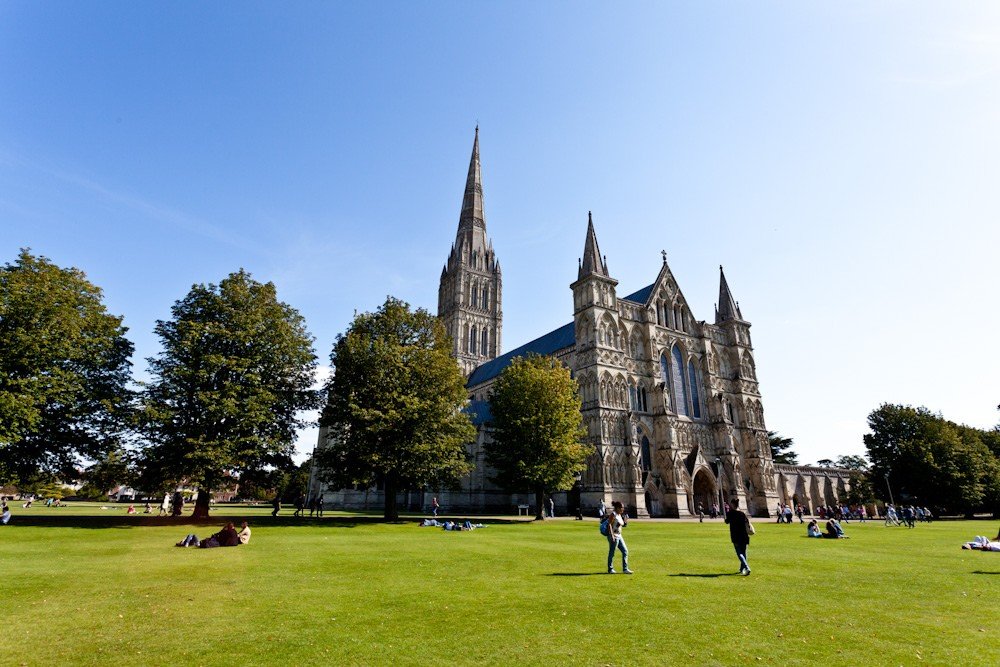
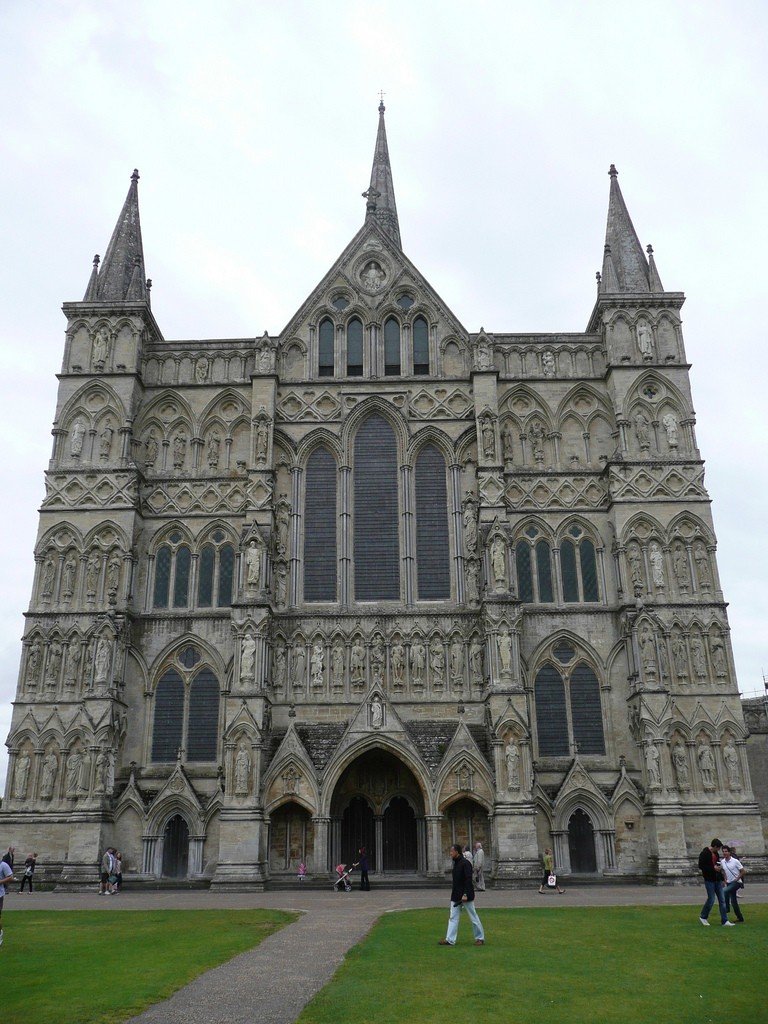
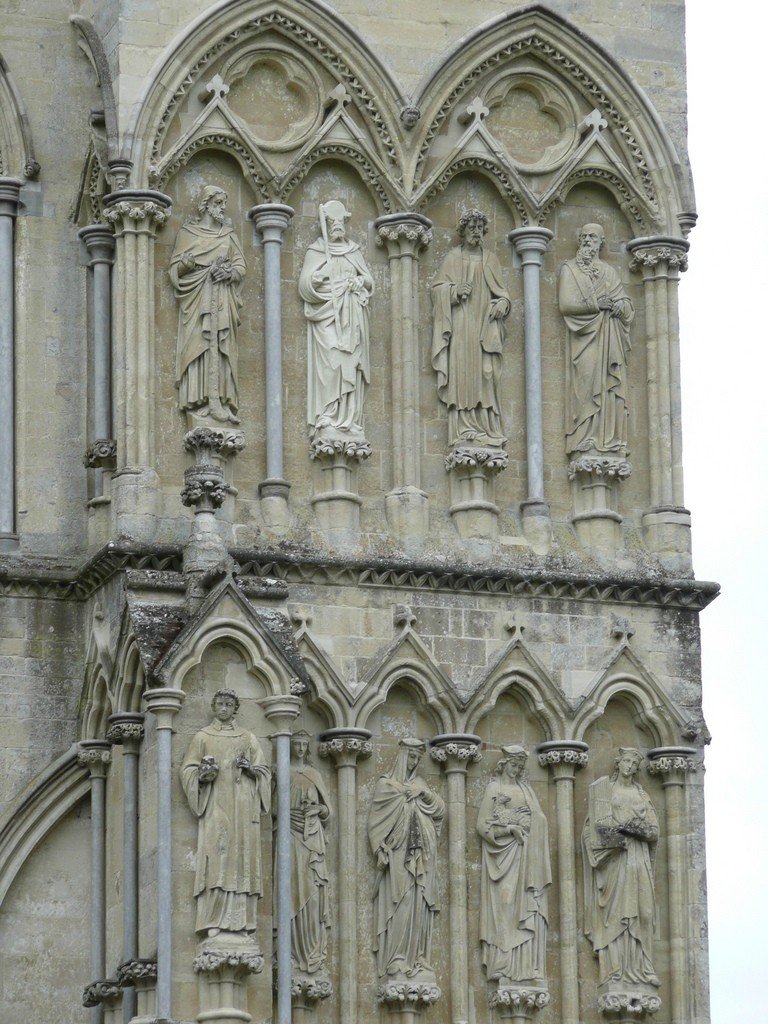
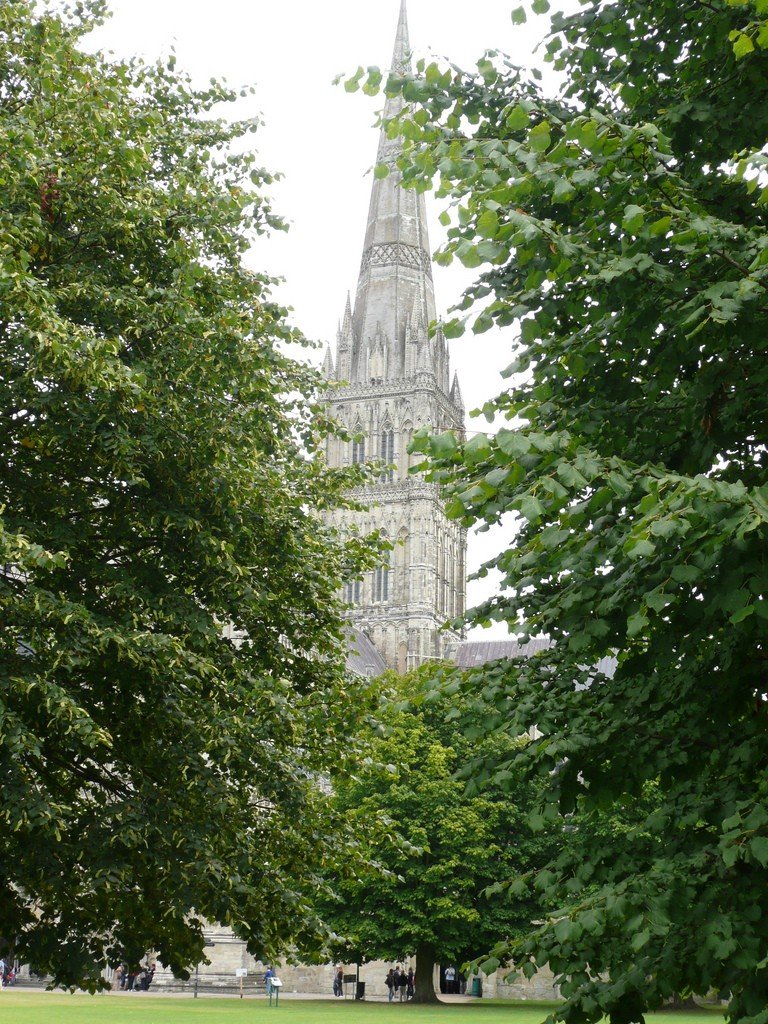
General information
Salisbury Cathedral is unmistakable – its pale gray spire (121 m), the tallest in Britain, towers over the medieval city, set in a low-lying area between hills. Salisbury Cathedral was built in an incredibly short time – 38 years, from 1220 to 1258. Richard Poore, Bishop of Salisbury, ordered it to be laid out on the flood meadow of the River Avon when the inhabitants of the ancient settlement with a church on Old Sarum Hill were forced to leave in 1220. The walls of the cathedral are made of local stone quarried 19 kilometers from the city. In 1260s the construction of the octagonal chapter house began, which was erected during 40 years. The spire, erected in the 1320s, rises to a height of 123 meters and is the highest in the country.
.
In the late 17th century, the famous architect Sir Christopher Wren was called in to solve some of the problems caused by the height and weight of the spire. In the mid-nineteenth century, Sir George Gilbert Scott led another phase of restoration of the spire. Today, the spire deflects less than 1 meter, and the foundations have only sagged a couple of meters into the marshy soil. The very fact that the cathedral has survived in all its splendor is a testament to the skill of the medieval builders.
.The extremely tall spire, which looks stable, is actually the least fortified in all of Britain. In the mid-nineteenth century, Sir George Gilbert Scott led another phase of restoration of the spire. Today, the spire deflects less than 1m and the foundations have only sagged a couple of meters into the boggy soil. The very fact that the cathedral has survived in all its splendor is a testament to the skill of the medieval builders.
.The interior of the cathedral
Rows with the faces of saints decorate the western pediment of the cathedral, the approach to which lies through a quiet courtyard. The nave, built in the form of an inverted ship, is bathed in a dim greenish-pink light. The dark marble columns seem too thin for the weight resting on them, which is entirely true. If you stand in the center and look up, you will see how much they have warped under the weight of the tower, spire, and roof of 6,400 tons of stone. In the north aisle, beneath the tattered and faded banners of the Wiltshire Regiment, the gears and levers of an ancient clock turn leisurely with a heavy ticking. It is Britain’s oldest working clock, dating back to 1386. Further on is the vaulted chapel, which looks like an elegant stone casket. It was built in the 16th century at the expense of Bishop Edmund Audley. Medallions on the choirs of XIX century work represent scenes of medieval rural labor: peasants chopping wood, sowing, picking apples. In the south aisle there is a 13th-century (c. 1240) stained glass window depicting the genealogical tree of Christ.
.Cathedral Courtyard
Among the many beautiful old buildings are the little college of St. Mary’s, erected in red brick in 1682 for the widows of priests, and Mompesson House, 1701, which keeps the cathedral grounds in the spirit of the 18th century (protected by the National Trust, tel. 01722-335659, closed Nov.-March and Fri. and Fri. Apr.-Oct.). The house has a fine carved staircase and a collection of glass. The 13th-century vestry now houses the Gloucestershire, Berkshire and Wiltshire Royal Regiment Museum (tel. 01722-419419, closed Mon-Feb-March and Nov). The facade of Malmesbury House, which belonged to Queen Anne, survives, as does the Bishop’s Palace, built at the same time as the cathedral. It now houses the parish school.
.